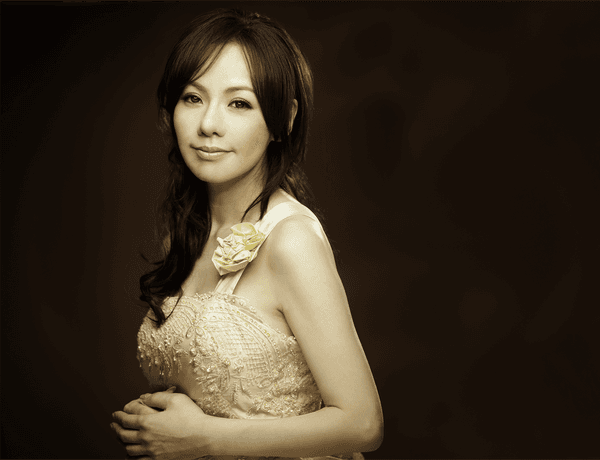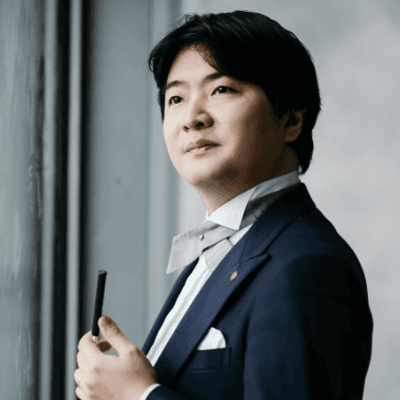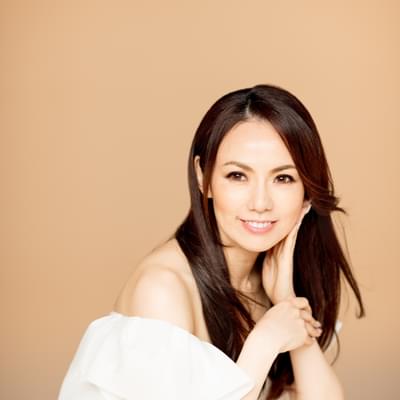Madam Butterfly

Full programme
- Puccini, Madam Butterfly (145mins)
Performers

Kazuki Yamada
Music Director
Thomas Henderson
Director
Laura Stanfield
Designer
Pene Pati
Pinkerton
Maki Mori
Cio-Cio SanHiroka Yamashita
Suzuki
Christopher Purves
Sharpless
Christopher Lemmings
Goro
Carolyn Holt
Kate
Samuel Pantcheff
Yamadori / Bonze
Jonathan Gunthorpe
Imperial Commisionaire
Matthew Pandya
Yakuside
Abigail Baylis
Cousin
Hannah Morley
Mother
Abigail Kelly
Aunt
Oliver Barker
Ufficiale
CBSO Chorus
Introduction
A very warm welcome to the Symphony Hall and this season's finale in which we present Puccini’s tragic romance, heartbreakingly beautiful in every sense.
The tragedy of Madama Butterfly does not reveal itself in the final moments; it lingers in the shadows while we are drawn towards a young woman’s burning faith in love and promises - until we realise that the ending, though shocking, has been inevitable. In the coming of Pinkerton - an American naval officer - to Nagasaki, Puccini dramatises a microcosm of the fresh infatuation of these cultures discovering each other during the turn of the 20th century.
Pinkerton’s genuine fascination with Butterfly during his discovery of Japanese culture belies the motivation of his own culture - to discover and exercise the individual’s right to Free Will and Choice. Thus we see Pinkerton enjoying Butterfly and her surroundings in the same way that he enjoys consuming whatever food, drink and activities he chooses - when he chooses. His enthusiasm for Butterfly may seem like deceit, but in fact we are watching the central, ill-fated cultural misunderstanding unfold. Although Pinkerton ends up with everything and Butterfly with nothing, he is as much of a victim of this misalignment as she is.
Being a semi-staged presentation, the creative priority is to visually deliver the essence of the piece: every costume, prop and lighting choice is included with the sole justification that it is crucial to the characters and their story.
While productions of the operatic canon are known nowadays for frequent ‘modern’ re-tellings, this is a piece that is arguably inextricable from its contemporary setting: this is partly because of the historical timing of the West and East truly discovering each other in a burst of fascination and dissonance, but more crucially that these worlds must feel as distant and different as they were then, in order for us to appreciate the immensity of the tragedy that saturates Butterfly's hope, faith, love - and eventual sacrifice.
Thomas Henderson
Director
Synopsis
Act One
A Japanese house, terrace and garden.
Below, in the background, the bay, the harbour and the town of Nagasaki.
It’s a warm day in 1904. Lieutenant F.B. Pinkerton of the USS Abraham Lincoln has been on overseas duty for some time and is planning to make his life a little more enjoyable. The local marriage-broker Goro has fixed him up a “marriage” with a local girl, Cio-Cio-San – a temporary arrangement, common at the time. But even a temporary marriage needs a home, and Pinkerton is fascinated by the paper panels and sliding doors of the traditional Japanese house that he has leased as a love-nest. He’s surprised to learn that he’ll also be taking on his new wife’s maid Suzuki – and that her distinguished uncle, the Bonze, will not be at the wedding.
Now it’s wedding day: and as the American consul Sharpless arrives to witness the ceremony, Pinkerton can’t quite believe his luck: he explains that Cio-Cio-San is as lovely and delicate as a butterfly. Sharpless has misgivings: Miss Butterfly recently visited the American consulate, and seemed to believe that her forthcoming marriage was entirely real.
Pinkerton laughs it off, pours them each a drink, and Butterfly and her bridesmaids approach. “Be careful” warns Sharpless - “she trusts you”. Amid the excited chatter, she explains how she comes from a noble but disgraced family. Her father had committed ritual suicide at the order of the Emperor; the fatal knife and some household gods are among the few possessions that she is bringing into her new life, since – as she explains – she has converted to Christianity to be more like her husband.
The contract is signed and Pinkerton tries to disperse the guests (easier said than done when uncle Yakuside has had too much to drink). Suddenly the Bonze appears, and curses Butterfly for renouncing her religion. Pinkerton isn’t having it: he drives the Bonze and the guests off his property and comforts his weeping bride. She kisses his hand, Suzuki withdraws and at last the newlyweds are alone together. As night falls and the stars light up, they retreat into the little house: united, it seems, in devotion and love.
Act Two
Inside Butterfly’s House.
Three years have passed, and Butterfly and Suzuki are alone in the house that Pinkerton has leased for them – and where he has not been seen for a very long time. Money is running out and although Sharpless has been paying the rent on Pinkerton’s behalf, Suzuki has never heard of a foreign husband who came back. Butterfly won’t hear it: Pinkerton promised that he would return at the time of year when the robins nest, and she has no doubt at all that one fine day his ship will sail in and they will be reunited.
Meanwhile, Goro has been urging her to remarry – the noble Prince Yamadori is both wealthy and besotted. Again, she won’t hear it. Now Goro and Yamadori arrive with Sharpless, and as Mrs Pinkerton, Butterfly is thrilled to welcome the consul to her “American home”. She has a question: when do robins nest in America? Sharpless is baffled and embarrassed; he tells her that he has had a letter from Pinkerton, that he will be returning to Japan but not to her and that she would be well advised to marry Yamadori.
Butterfly is defiant. She runs inside, and emerges carrying a child: her son. “His child?” asks Sharpless, incredulous. She points to the toddler’s golden hair and blue eyes: nothing Japanese about those! The boy’s name, she says, is Sorrow: but when his father returns it will be Joy. Shocked and moved, Sharpless agrees that Pinkerton must be told, and leaves for the city. Suddenly a cannon booms across the bay, and through her telescope Butterfly sees that the USS Abraham Lincoln has entered harbour. Ordering Suzuki to fill the house with flowers, she puts on her wedding dress, gathers little Sorrow to her and sits down to await her husband’s arrival.
Act Three
So she waits, and waits: past sunset, and all through a night in which the very air seems to shimmer with wordless voices. Dawn rises to find Suzuki and Sorrow asleep where they sit, while Butterfly remains awake and watching. Just as she nods off, there’s a knock at the door: Sharpless and Pinkerton have returned, but only Suzuki is awake to greet them. She’s amazed, and then shocked to see an American woman standing in the garden. Sharpless explains what Suzuki has already guessed: the woman is Pinkerton’s American wife Kate and they have come to take the child away – for his future welfare, of course. He begs Suzuki to help them break the news to Butterfly.
Pinkerton can’t face the scene that is about to unfold, and makes his excuses. Butterfly takes it surprisingly well: she meets Kate and agrees to let Pinkerton take the child, as long as he promises to return to collect him in person in half an hour. She refuses the money that Pinkerton has left for her, and withdraws. She still has her father’s knife. She dismisses Suzuki, blindfolds little Sorrow, gives him an American flag to hold and retreats behind the screen door to drive home the fatal blade. As her life ebbs, she embraces her son and falls to the ground, while Pinkerton rushes to the scene with a desperate cry – “Butterfly! Butterfly! Butterfly!”
© Richard Bratby
Programme Notes
One fine day in Japan, 1904. Cio-Cio San is young, beautiful and about to marry the man of her dreams. But her American bridegroom sees things very differently, and as reality begins to dawn, Puccini’s Madam Butterfly unfolds one of opera’s most heart-rending tragedies of love betrayed. Japanese soprano Maki Mori stars in this sumptuous concert performance of one of the world’s favourite operas: a score (and a story) close to Kazuki Yamada’s heart.
Japanese tragedy by Luigi Illica (1857-1919)
and Giuseppe Giacosa (1847-1906)
Music by Giacomo Puccini (1858-1924)
Madam Butterfly
Hits and a Miss
When the West End producer Cameron Mackintosh was asked to explain the success of the musical Miss Saigon, he had a simple explanation. “The story of a woman giving up her baby” he explained: “that’s primal”. It’s a tale that resonates across cultures and decades, and Mackintosh’s composer and librettist Claude-Michel Schönberg and Alain Boublil already knew that – because (as they freely admitted) they’d based their entire show on an earlier musical theatre sensation that dealt with exactly the same subject.
Giacomo Puccini’s opera Madama Butterfly, on a libretto by Giuseppe Giacosa and Luigi Illica premiered in Milan on 17th February 1904 and would become one of the most popular operas ever composed: a position it still holds. Since 1996, Madama Butterfly has received more than 14,000 performances around the world. As of 2024, it’s the world’s eighth most performed opera (Puccini’s own Tosca and La bohème have pipped it to the post).
In other words, it’s a phenomenon – and one that would have delighted (but possibly not surprised) Puccini had he been gifted with foresight on the morning after the first performance. He’d been confident of a smash, and on the eve of the premiere he wrote a gallant “break a leg” note to his leading lady, the soprano Rosina Storchio. “My good wishes are superfluous! So true, so great so moving is your performance that the public must succumb to it”.
Puccini reckoned without Milan’s famously combative opera-going public. His enemies were out in force and the performance (wrote one critic) was drowned out by “growls, shouts, groans, laughter, giggling”. There was no second night: Puccini immediately withdrew the opera. In private, though he fumed: “I am still shocked, not so much by what they did to my poor Butterfly, but for all the poison they spat on me as a man and an artist”. It was a disastrous birth for one of the world’s favourite operas.
A Japanese Tragedy
And yet Puccini, his librettists and his publisher Ricordi had every reason to expect a success. By the late 19th century, Western audiences had developed an intense fascination with Japan: both the complex and often surprising reality, and the picturesque, idealised version familiar (in the words of W S Gilbert) “on many a vase and jar, on many a screen and fan”. International exhibitions, such as the Japanese village in London that might or not have inspired Gilbert and Sullivan’s The Mikado (1885) had brought authentic Japanese art and culture to western audiences for the first time.
The Mikado was a Europe-wide success (Puccini owned the score, and made notes from it), but it was far from the only opera to trade on the new fascination for all things oriental. Mascagni’s Iris (1898) had a libretto by Illica and told a titillating story of a Japanese girl sold into sexual slavery. More palatable (and hugely more popular) was an English operetta, Sidney Jones’s The Geisha (1896) - a romantic comedy involving an English sailor and a Japanese woman trapped by the conventions of her society. It ends happily, and The Geisha became the West End’s first international blockbuster hit.
But Puccini’s imagination was sparked by Madame Butterfly, a new play that he saw in London in May 1900. This one-act drama was adapted by the American playwright David Belasco from a novella written in 1898 by John Luther Long, a Pennsylvania lawyer who maintained that it was based on a true story. His sister, a Methodist missionary in Nagasaki, had told him of “Cho-Cho-San”, a “teahouse girl” who had been abandoned by the father of her child. The similarities between her story and Madame Chrysanthème (1887) – a novel by the Frenchman Pierre Loti about a naval officer who contracts a “temporary marriage” with a Japanese woman – probably aren’t entirely coincidental.
One Fine Day
Puccini had been looking for a libretto (he’d even considered making an opera out of Les Misérables). But “the more I think of Butterfly, the more irresistibly I am attracted” he wrote to Ricordi in November 1900. By the spring of 1902 both the librettists and the composer were hard at work – with Puccini taking particular care to treat the Japanese elements in a respectful and accurate way.
At Illica’s suggestion, he arranged a meeting in Milan with Sadayakko Kawakami – a celebrated Japanese actress and former geisha, who was touring Italy. He discussed the score with Hisako Ōyama, the musically-gifted wife of Japan’s ambassador to Italy, who obtained scores of Japanese music from Tokyo for him, and may have advised upon their use. The Imperial anthem Kimigayo and the march Miyasan both appear in the score, as does the folksong Sakura (Cherry Blossom). Illica and Giocosa, meanwhile, had extended and deepened Belasco’s play. “For my part, I am laying stone upon stone and doing my best to make Mr F.B. Pinkerton sing like an American”, reported Puccini to Ricordi.
By the end of 1902 the score was complete, and Puccini was ebullient: “the work is finished and we are satisfied – more than satisfied!” Next came orchestration – delayed when Puccini’s new car skidded off the road on a foggy February night, leaving him unable to walk unaided for nearly two years. The car-crash of Butterfly’s first night would leave longer-lasting scars. Undaunted, Puccini revised the score before relaunching the opera three months later in Brescia, on 28th May 1904. This time, noted Puccini, “it went exactly as I had wished: a real and unqualified triumph: the success is greater every evening”. The rest, we know.
East and West
Or almost. Cultural perspectives shift, and while it’s true that Puccini and his contemporaries delighted in the externals of oriental culture, Europeans in 1904 were deeply suspicious of the growing wealth and cultural might of the USA. The blasts of The Star-Spangled Banner that punctuate Madama Butterfly come pre-loaded with irony. Japan, meanwhile, was an emerging world power. Nine days before the premiere of Madama Butterfly, it had begun a devastating war against Russia – initiating four decades of aggressive imperial expansion.
Puccini examines both cultures in the round. Cio-Cio-San has seen her family destroyed by the Japanese state and (despite opposition from her relatives) has made a courageous decision to reject those values by embracing an entirely different way of life. Pinkerton is not the whole of the USA, and along with the devoted Suzuki, the kindly consul Sharpless seems at times to be one of the few figures on stage to have Cio-Cio-San’s true interests at heart.
And we can all recognise, if not endorse, Pinkerton’s behaviour: the charm that Puccini gives him is real enough, and thoughtless, sexually-entitled behaviour by young people on overseas jaunts is as old as travel itself. That Cio-Cio-San pays the ultimate price for Pinkerton’s decisions might perhaps be seen as the conventional fate of an Italian operatic heroine. But what’s indisputable is the overwhelming sympathy with which Puccini and his co-creators tell her story. We hope and suffer with her - so much so that many Pinkertons find themselves greeted with boos as they take their bow.
That can be a back-handed pay-off for a singer who’s just given a superb portrayal of a difficult role – but it’s a powerful tribute to Puccini’s characterisation. 120 years on, few operas deliver their emotional payload with more power or precision, and few operatic characters live more vividly in our imaginations than Pinkerton, Sharpless, Suzuki and the brave, foolish and devoted Cio-Cio-San. These aren’t stereotypes: they’re humans doing what (for better or worse) humans do. Once again: that’s primal.
© Richard Bratby
Featured image © Yuji Hori
